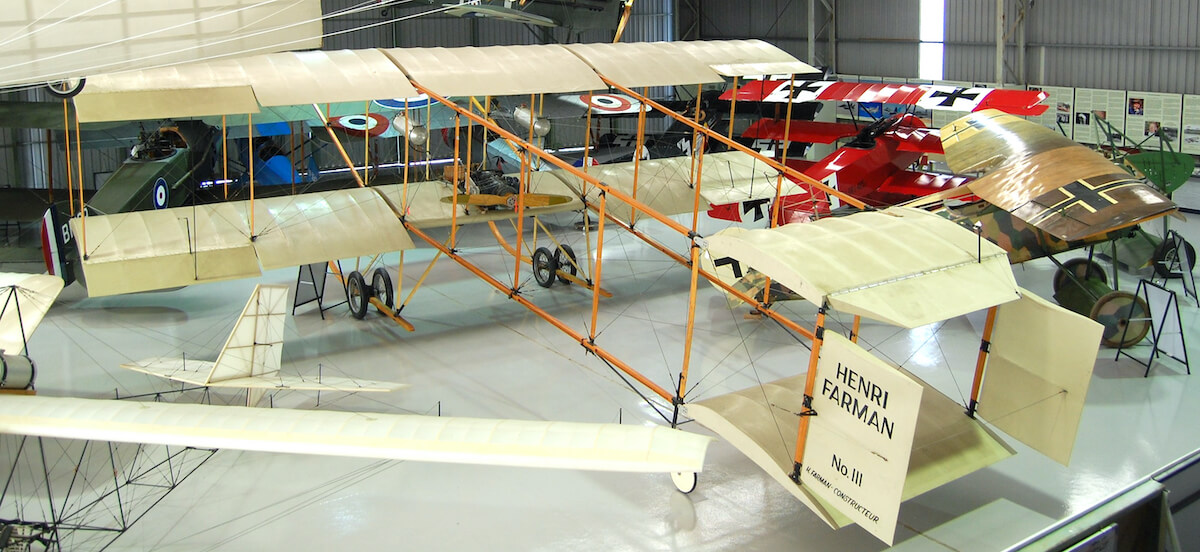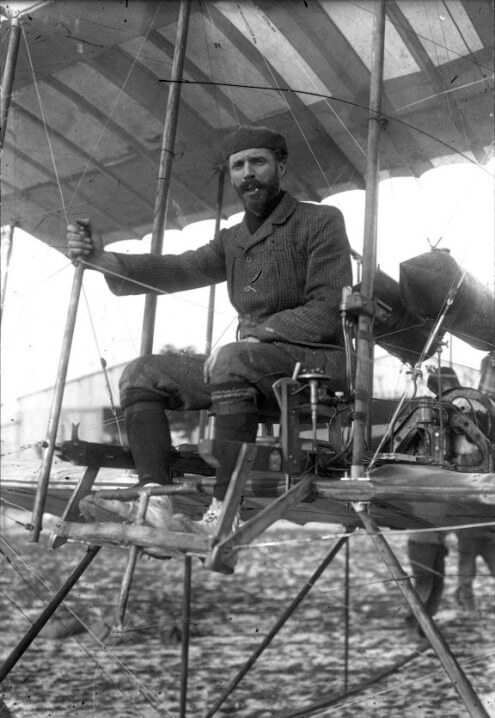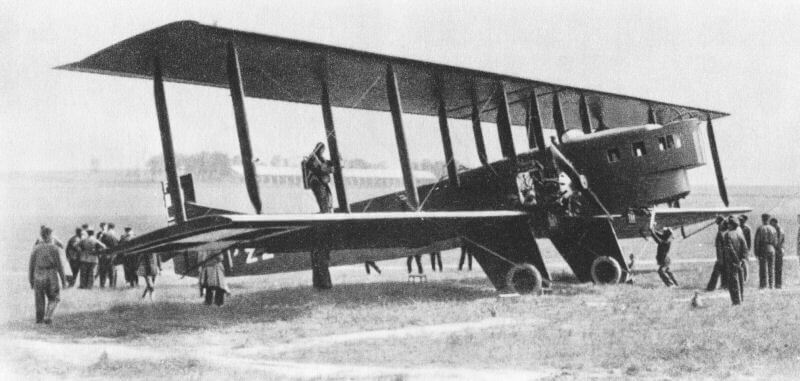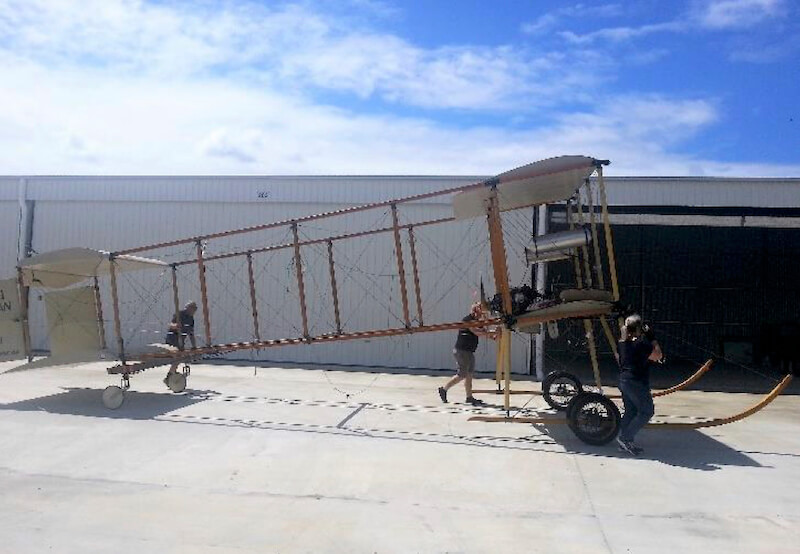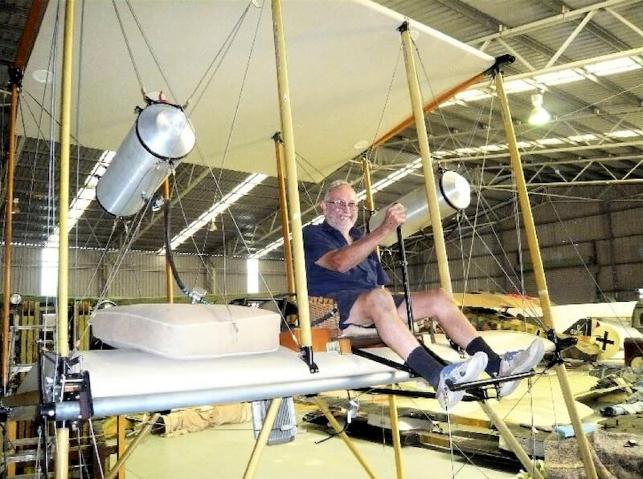TAVAS News
1910 Henri Farman
The Man Behind the Machines
Henri Farman was born in Paris on 16th May 1874, second of three sons of a relatively wealthy English journalist and a French mother. Like the Wright brothers he started his career by selling and racing bicycles. During the mid 1890’s he won several prizes and records. He was French champion in 100 km road racing, in 1892. Both he and his younger brother Maurice were a famous tandem pair, setting a speed record in 1894.
He then went on to motorcycles and from the end of the 1890’s to motor cars. He became a well-known and successful automobile racer, for example winning his class in the Paris-Vienna race in 1902. While recuperating after injuries suffered in an accident during the 1904 Circuit d'Auvergne, he discovered aviation which appealed to him as he considered it safer than auto racing!
He initially couldn't afford to get into flying, but he started a company building coachwork for cars and in two years made enough money to order an airplane from the Voisin brothers.
On the 13th January 1908, he won the 50,000 francs Deutsch-Archdeacon prize for the first closed-circle flight of a kilometre in Europe. On 30th October 1908 he made the first cross-country flight, between Mourmelon (Bouy) and Rheims.
From Aviator to Aircraft Maker
In 1909 Farman built his own aircraft, incorporating the improvements he had made to the Voisin design - like ailerons, better landing gear and simplified structure and tail surfaces.
The Farman III was, like the Voisin, an equal-span pusher biplane with a single forward elevator and biplane tail surfaces carried on booms. Lateral control was effected by ailerons on both upper and lower wings. The undercarriage also differed considerably, replacing the pair of wheels with a pair of skids each carrying a pair of wheels, sprung using bungee cord and restrained by radius rods.
As first flown in April 1909 the airframe was made of wood, mainly ash, with members joined using aluminium sockets. Wing and tail surfaces were covered with a single fabric surface, with the ribs and two spars enclosed in pockets. The fixed vertical surfaces had been removed and the ailerons replaced with smaller ones by the time the aircraft appeared at Reims in August.
The original engine was a 50 hp 4-cylinder inline water-cooled Vivinus. Farman replaced the engine with the new and more reliable 50 hp Gnome Omega rotary engine. Production aircraft were fitted with a variety of engines, including the Gnome and the E.N.V. water-cooled V-8 engine.
Records and Recognition
On 27th August 1909, Farman made his next record breaking flight, covering 180 kilometres in just over 3 hours, during the Grande Semaine d’Aviation at Rheims. The following day he piloted the first ever 3-person flight when he carried 2 passengers for 10 kilometres from the meet at Rheims.
Then, on 3rd November he set another distance record from Mourmelon, flying 232 kilometres in 4 hours 17 minutes and 53 seconds.
In 1910 his design was modified by adding an elevator to the upper tailplane surface.
The Farman III had enormous influence on European aircraft design, especially in England. Drawings and details of the aircraft were published in England by Flight, and it was so widely imitated that its layout became referred to as the "Farman Type". Among these aircraft are the Bristol Boxkite, the Short S.27 and the Howard Wright 1910 Biplane. The Bristol aircraft was so similar to Farman's design that he considered legal action.
The Farman Company
After his successes at the 1909 meetings, Farman focused on the design and production of the planes carrying his name. In 1910 the robust and manoeuvrable Farman biplane was the most successful type in competitions.
Farman was rewarded by commercial success and many examples of the type were sold. Farman III aircraft were also built in Germany by the Albatros Flugzeugwerke at Johannistal as the Albatros F-2.
The type was widely used as a training aircraft. By the beginning of 1911 the Aéro-Club de France had issued 354 pilots licences, of which 81 had been gained flying a Farman III; a total only exceeded by the 83 pilots who had qualified flying a Blériot monoplane.
Seven examples were used by the Greek military for reconnaissance, during the Balkan Wars.
From 1912 Farman formed a highly successful and innovative aircraft manufacturing company together with his brothers Maurice and Dick. Their 1914 model was used extensively for artillery observation and reconnaissance during World War I.
They were also pioneers in commercial aviation, launching "Lignes Farman", one of the first airlines, in February 1919. The Farman Aviation Works F.60 Goliath, was the first long-distance passenger airliner, beginning regular Paris-London flights on 8th February 1919.
The Farman brothers built more than 200 types of airplanes and several types of engines. The company survived until 1937, when it was nationalised, at which time Henri Farman retired. After losing control of their company the other brothers continued at a smaller scale, building Stampe trainers under license.
After WW2 the Farman’s tried to get into light aviation, without much success, and the 1956 F.521 Monitor III (similar layout and look to the DHC-1 Chipmunk) was the last plane to carry the Farman name.
Henri Farman died on 18th July 1958 in Paris and is buried in the Cimetière de Passy.
TAVAS Replica
TAVAS 1910 Farman III example was built by a group of volunteers at the Owls Head Transport museum in Maine. A lot of time and effort has gone into this and the workmanship is impressive.
For whatever reason, they felt the need to modify the airfoil. This seems to be a common problem with Americans building replicas – they always think they know better, not realising that a change of airfoil then requires other changes to make the aircraft fly as it should. I have come across this problem before and expect to do so again in the future. Still, the fixes have been made to overcome this shortcoming.
The Bristol Boxkite was very much a copy of the Farman III. The Boxkite was used to train the first pilots of the Australian Flying Corps. It is probably best known in popular culture for its role in the 1965 movie Those Magnificent Men in Their Flying Machines. So the Farman III will appear familiar to many, is certainly an eye catching aircraft and is a welcome addition to our fleet.
Our stunning 1910 Farman replica makes a huge impression on museum visitors. It's a very big machine, especially compared to the more nimble WW1 fighters.
Henri Farman in one of his earliest machines, around 1908.
The Farman F.60 airliner of 1919.
As much of our replica as could be completed before April 2018, when work had to focus on getting the museum ready to open. Aircraft were moved into other hangars while the floors were painted, and work on the Farman had to be put on hold for several weeks.
The man who makes it all happen, TAVAS engineer Dave Walsh, sits in the Farman after having assembled the centre section. It's a long way off the ground, and quite an effort to get up to the seat - and that was without the forward fuselage struts and canard in place!
© Copyright The Australian Vintage Aviation Society

